Melaleuca is never the most exciting plant in its landscape, but it is usually the most important. Perhaps it is planted as a hedge, whose shimmering flowers set the tone for the rest of the garden. Maybe topiary, whose architecture bounces off showier herbaceous planting. Or a tree, towering with gnarled papery bark, in twisting contortions over the rest of the garden.
In any case, Melaleuca is a myrtle, and that means it can be made to work for you and your garden. Below, I will share exactly how.
More...
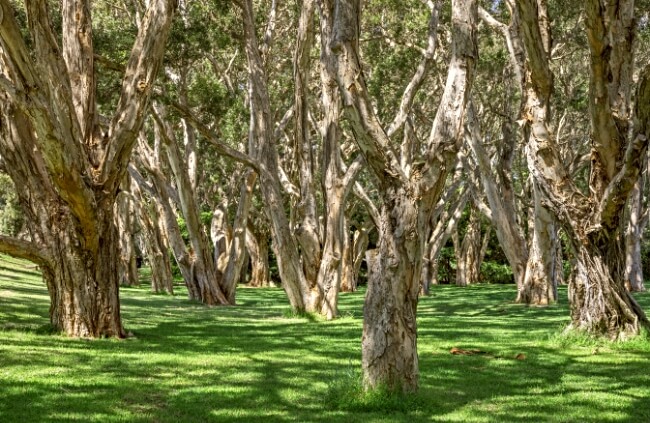
Family: | Myrtaceae |
|---|---|
Genus: | Melaleuca |
Species: | Various |
Common Names: | Honey myrtle, paperbarks, tea trees |
Origin: | Australia and Malaysia |
Location: | Outdoor |
Type: | Shrubs and trees |
Growth: | Trees up to 35m, Shrubs up to 16m (after 60 years) |
Sun requirements: | Full sun or light shade |
Foliage Colour: | Green or blue-green |
Flower Colour: | Various |
Flowering: | Spring and summer |
Edible Parts: | Leaves and flowers of most species can be used as herbal tea |
Maintenance level: | Low |
Poisonous for pets: | Some mild toxicity in dogs and cats (unlikely to ingest) |
What is Melaleuca?
Melaleuca, commonly known as the honey myrtle, or paperbark, is a genus in the Myrtle family (Myrtaceae, commonly called the tea tree family). The genus has around 300 species, including 35-metre-tall trees and dwarf shrubs reaching no more than 1m tall.
All species of Melaleuca share some common characteristics, like peeling bark, heavily scented foliage, and flower clusters made up of dozens of individual flowers, each with dozens of fibrous anthers, resembling bottle brushes.
Differences in growth habits are very varied within the genus, and not just in height. Most Melaleucas flower in early summer, but there are some that flower in mid-spring, and one of two species are late flowering, often as late as April.
Paperbarks' Natural Habitat
Nearly all of the 300 species of Maleleuca are native to mainland Australia, other than a handful found in Malesia, New Caledonia and Lord Howe Island.
Their habitats vary from swamps to saltpans and open sandy soils, meaning that some prefer moist, nutrient-rich conditions, and others are happiest in soil with very little nutritional value.
Swamp clearance is a significant threat to some endangered Melaleuca species, and myrtle rust is putting some species with limited distribution at risk.
Medicinal and Edible Uses for Melaleuca
Melaleuca, the honey myrtle, is edible and is used to ease breathing blockages as an infusion or rub. The foliage is pungently scented and opens up airways, and simply crushing and rubbing the leaves of Melaleuca can ease skin irritation (it is both cooling and antibacterial).
Professional preparations of essential oils or Melaleuca tinctures are widely used as home remedies for cold sores, blocked noses and to soothe general inflammation, but should not be used as an alternative to prescribed medication without consulting your doctor.
Herbal tea made from any genus in the myrtle family (tea trees) is generally soothing, but can also offer specific relief from stress and anxiety.
The Best Melaleuca Species to Grow in Australia
While there are some distinct outliers in terms of swamp-dwelling Melaleuca and those that love boggy conditions, those that are best suited to typical Australian gardens are listed below.
1. Melaleuca bracteata Growing up to 10m tall, Melaleuca is one of the taller shrub species. Its fine foliage is at its best following pruning, when the new growth has soft green stems, covered in small white clouds of fluffy flowers. It is native to northern Australia but grows happily anywhere in the country. Its common name is the mock olive thanks to the rich colour of older foliage. | 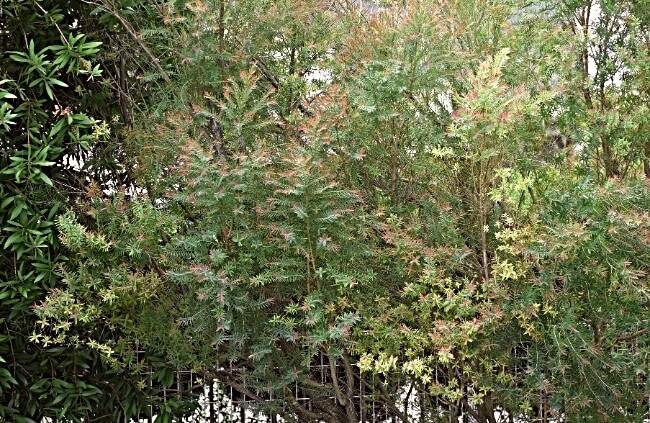 |
2. Melaleuca hypericifolia The hillock bush is a wonderful garden plant, otherwise known as Melaleuca hypercifolia. Native to New South Wales, this easily controllable shrub is ideal for gardeners without any hint of a green thumb. It will grow in nearly any conditions, and present dramatic red pink bottlebrush flowers in summer. |  Source: Friends of Lane Cove National Park |
3. Melaleuca alternifolia This diminutive tree is native in Northern New South Wales. It grows to no more than six metres at full maturity, with erratic branches, offering twisted and gnarled structure. Its gorgeously silvery bark stands out against beautiful grey-green foliage and huge, crisp, white blooms. While it grows in swamps and with roots partly submerged in the banks of streams and rivers in nature, it will cope with better drainage in gardens. |  Source: Onszaden |
4. Melaleuca microphylla The small, dense, leaves of Melaleuca microphylla make it ideal for hedging, or creating informal ground cover. It can grow to about 5m tall at maturity but copes well with restrictions, either in containers or with regular pruning. The flowers of Melaleuca microphylla are not distinctive but have a sweet minty fragrance while in bloom. | 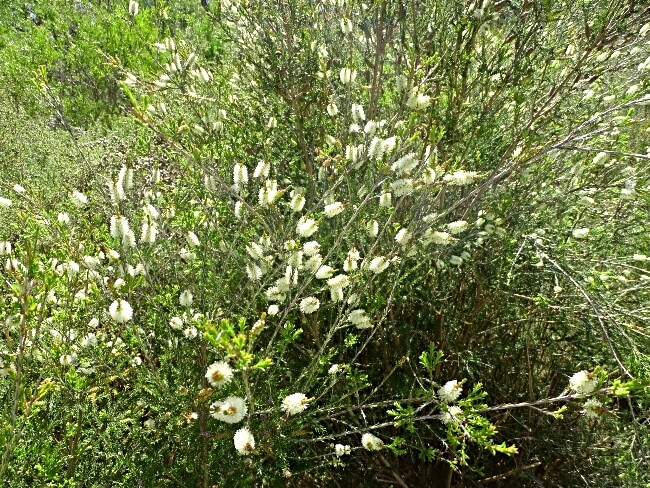 Source: iNaturalist UK |
5. Melaleuca thymifolia With the common name of ‘Thyme Honey Myrtle’, Melaleuca thymifolia is a fairly self-explanatory species. It is native to eastern Australia, and grows in uneven, unpredictable spreading habits, replicating thyme in more ways than one. If you like the idea of trailing thyme pouring down over a wall, or spilling from a large container, it is worth considering Melaleuca thymifolia as an alternative, as it has much more dramatic flowers. | 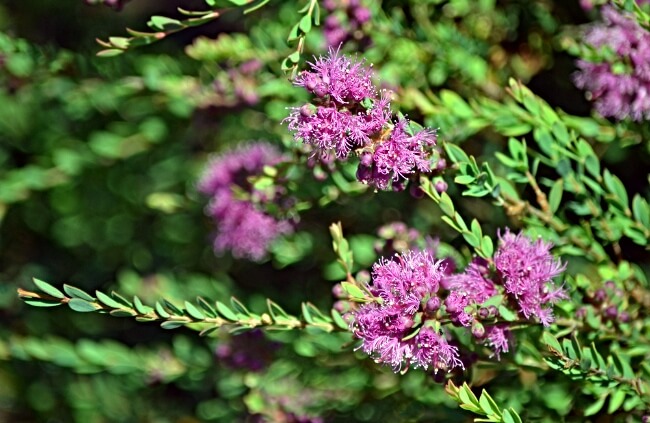 |
6. Melaleuca linariifolia Melaleuca linariifolia is blessed with a complete covering of fine white flowers in summer, and grows a multi-stemmed tree or large shrub, reaching about 10 metres tall when fully grown. Snow-in-summer and flax-leaved paperbark are both common names for this bushy Melaleuca, which adds a naturalistic structure and a bountiful habitat for birds wherever it is planted. |  |
7. Melaleuca gibbosa Melaleuca gibbosa offers gardeners countless options. These Australian native plants can be grown as a small shrub, with freedom to become wild and wiry, filtering light and adding natural forms to dry gardens. Or… it can be pruned tightly once a year to control it, providing a wonderful flowering hedge. It’s one of the best options for cooler climates and is native to southern Australia, so generally quite easy to grow in most Aussie gardens. | 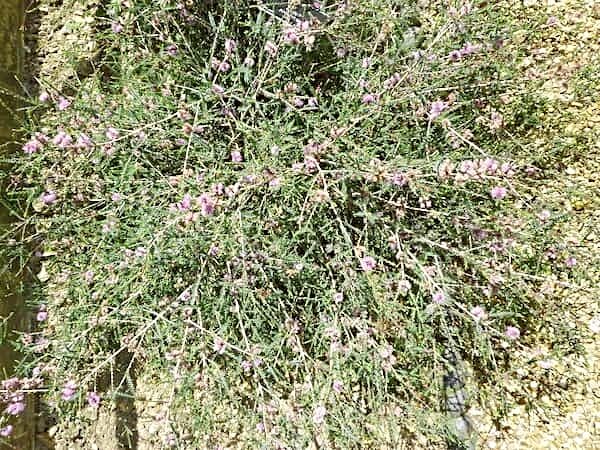 Source: Australian Native Plants |
8. Melaleuca viridiflora Also known as the broad-leaved paperbark, Melaleuca viridiflora is perhaps one of my favourite trees. Its dusky red flowers are dusted with golden pollen, standing out from substantial and fragrant foliage. The pale white bark flakes and peels in reliable rhythms, and as it matures until it shares more and more of its form, the foliage thins to reveal the wonderful branch structure beneath. It is a tree with a wide range of native conditions found in woodlands just as often as stream sides, but it does like watering throughout summer in dry conditions. | 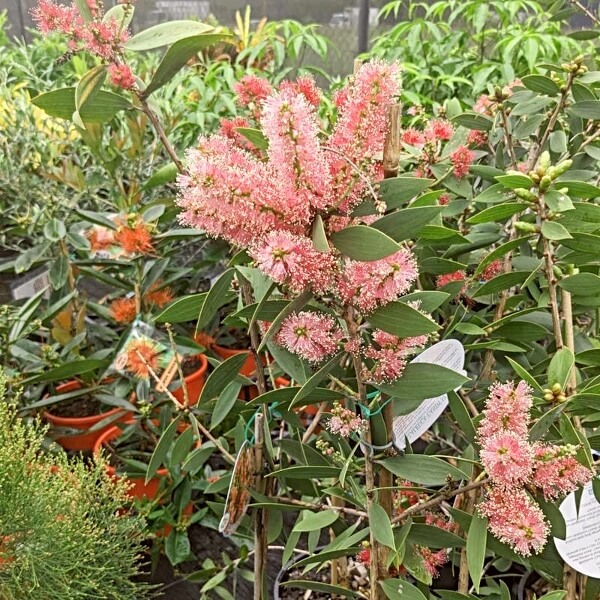 Source: Project Plants |
9. Melaleuca fulgens Perhaps the most compact Melaleuca is M. fulgens. This tightly formed doming shrub is completely packed with generous red blooms in summer and will grow happily in any well-drained soil. It has native ranges across most of Australia, from Western Australia to Southern Australia and the Northern Territory. | 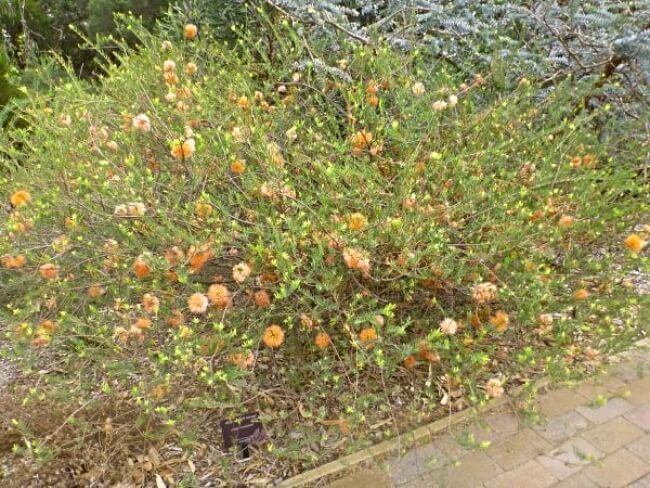 |
10. Melaleuca incana Melaleuca incana’s common name is the grey honey myrtle, and not without good reason. This ghostly tree has the most wonderful drooping branches, packed with fine grey-green leaves. There are some variations on this species, including M. incana ‘Prostrata’ which grows to about 50 cm tall, and 1-2 m wide, but I have a real soft spot for the tree form, which reaches about 3m tall and would work beautifully as an informal backdrop to a large herbaceous border. | 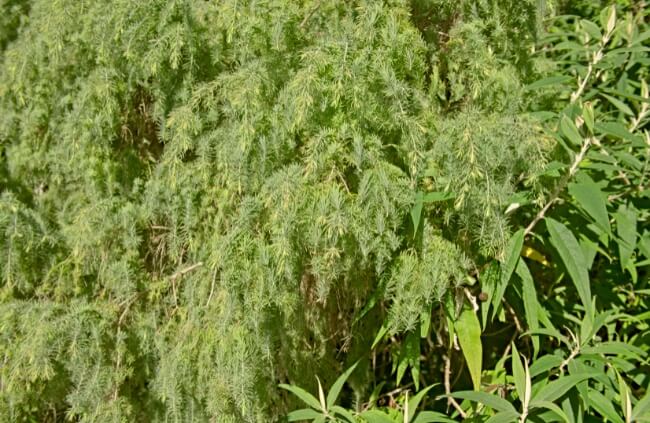 |
11. Melaleuca argentea Native to Northern Australia, Melaleuca argentea, the silver cadjeput, is one of the most iconic tropical swamp plants in the country. Its bright yellow flowers and huge size are unmistakable, yet somehow it's fairly rare in our gardens. It can be trained as a shrub, so do not be put off by its size. However, if you are looking for a large statement tree, it is reasonably fast-growing and has some of the most distinctively papery bark of any paper bark tree. |  Source: Territory Native Plants |
1. Melaleuca bracteata

Growing up to 10m tall, Melaleuca is one of the taller shrub species. Its fine foliage is at its best following pruning, when the new growth has soft green stems, covered in small white clouds of fluffy flowers.


Get Your Free Guide:
Master Growing Australian Natives eBook
A Must Have Complete Guide for Every Australian Garden
Get Your Free Guide:
Master Growing Australian Natives eBook
A Must Have Complete Guide for Every Australian Garden
It is native to northern Australia but grows happily anywhere in the country. Its common name is the mock olive thanks to the rich colour of older foliage.
Melaleuca bracteata growing guide
2. Melaleuca hypericifolia
The hillock bush is a wonderful garden plant, otherwise known as Melaleuca hypercifolia. Native to New South Wales, this easily controllable shrub is ideal for gardeners without any hint of a green thumb.
It will grow in nearly any conditions, and present dramatic red pink bottlebrush flowers in summer.
Melaleuca hypericifolia growing guide
3. Melaleuca alternifolia

Source: Onszaden
This diminutive tree is native in Northern New South Wales. It grows to no more than six metres at full maturity, with erratic branches, offering twisted and gnarled structure. Its gorgeously silvery bark stands out against beautiful grey-green foliage and huge, crisp, white blooms.
While it grows in swamps and with roots partly submerged in the banks of streams and rivers in nature, it will cope with better drainage in gardens.
Melaleuca alternifolia growing guide
4. Melaleuca microphylla

Source: iNaturalist UK
The small, dense, leaves of Melaleuca microphylla make it ideal for hedging, or creating informal ground cover. It can grow to about 5m tall at maturity but copes well with restrictions, either in containers or with regular pruning.
The flowers of Melaleuca microphylla are not distinctive but have a sweet minty fragrance while in bloom.
5. Melaleuca thymifolia

With the common name of ‘thyme honey myrtle’, Melaleuca thymifolia is a fairly self-explanatory species. It is native to eastern Australia, and grows in uneven, unpredictable spreading habits, replicating thyme in more ways than one.
If you like the idea of trailing thyme pouring down over a wall, or spilling from a large container, it is worth considering Melaleuca thymifolia as an alternative, as it has much more dramatic flowers.
6. Melaleuca linariifolia

Melaleuca linariifolia is blessed with a complete covering of fine white flowers in summer, and grows a multi-stemmed tree or large shrub, reaching about 10 metres tall when fully grown.
Snow-in-summer and flax-leaved paperbark are both common names for this bushy Melaleuca, which adds a naturalistic structure and a bountiful habitat for birds wherever it is planted.
7. Melaleuca gibbosa

Source: Australian Native Plants
Melaleuca gibbosa offers gardeners countless options. These Australian native plants can be grown as a small shrub, with freedom to become wild and wiry, filtering light and adding natural forms to dry gardens. Or… it can be pruned tightly once a year to control it, providing a wonderful flowering hedge.
It’s one of the best options for cooler climates and is native to southern Australia, so generally quite easy to grow in most Aussie gardens.
8. Melaleuca viridiflora

Source: Project Plants
Also known as the broad-leaved paperbark, Melaleuca viridiflora is perhaps one of my favourite trees. Its dusky red flowers are dusted with golden pollen, standing out from substantial and fragrant foliage.
The pale white bark flakes and peels in reliable rhythms, and as it matures until it shares more and more of its form, the foliage thins to reveal the wonderful branch structure beneath.
It is a tree with a wide range of native conditions found in woodlands just as often as stream sides, but it does like watering throughout summer in dry conditions.
Melaleuca viridiflora growing guide
9. Melaleuca fulgens

Perhaps the most compact Melaleuca is M. fulgens. This tightly formed doming shrub is completely packed with generous red blooms in summer and will grow happily in any well-drained soil.
It has native ranges across most of Australia, from Western Australia to Southern Australia and the Northern Territory.
Melaleuca fulgens growing guide
10. Melaleuca incana

Melaleuca incana’s common name is the grey honey myrtle, and not without good reason. This ghostly tree has the most wonderful drooping branches, packed with fine grey-green leaves.
There are some variations on this species, including M. incana ‘Prostrata’ which grows to about 50 cm tall, and 1-2 m wide, but I have a real soft spot for the tree form, which reaches about 3m tall and would work beautifully as an informal backdrop to a large herbaceous border.
Melaleuca incana growing guide
11. Melaleuca argentea

Source: Territory Native Plants
Native to Northern Australia, Melaleuca argentea, the silver cadjeput, is one of the most iconic tropical swamp plants in the country. Its bright yellow flowers and huge size are unmistakable, yet somehow it's fairly rare in our gardens.
It can be trained as a shrub, so do not be put off by its size. However, if you are looking for a large statement tree, it is reasonably fast-growing and has some of the most distinctively papery bark of any paper bark tree.
Ideal Conditions for Growing Melaleuca
I realise we have spoken about some of the more varied species, and I mentioned that many are actually swamp plants, but when it comes to planting a standard species in your own garden, it is quite straightforward.
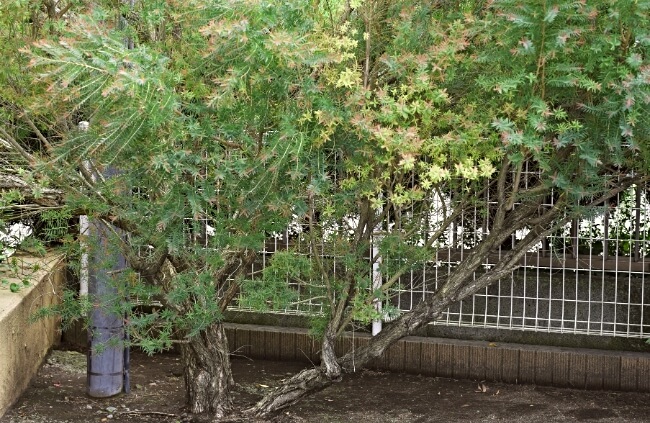
Soil & Drainage
Different Melaleuca species are very varied but, to generalise the wider genus, it is quite easygoing and likes conditions with available water but free drainage. Sandy loam is ideal if you have it, or can create it either by adding natural sand to richer earth or by improving poor sandy soil with peat-free soil improvers.
There are some species that need boggy, even swamp conditions, but if we are being realistic, you are very unlikely to grow them at home. Nearly all Melaleuca varieties available in garden centres and nurseries will prefer a free-draining sandy loam.
Light & Temperature
All Melaleuca trees need light eventually, but young trees can cope with competition. Shrub forms of Melaleuca are mid-story plants in most natural settings, so are equally happy in part shade or full sun.
Provided young Melaleuca plants are watered during droughts or heat waves they will establish well, and there is no upper-temperature limit in Australia that will harm them. However, nearly all species are frost-tender.
Planting Melaleuca
There are no special notes about planting Melaleuca, but it’s worth noting that its roots spread outwards, not downwards, so there’s no need to dig deeper than the size of the root ball.
Myrtles don’t have invasive roots and can be planted reasonably close to buildings.
- To plant a young Melaleuca, dig a hole that is twice as wide as the root ball, but no deeper. Prepare the soil according to the soil requirements above.
- Remove the tree from its container and carefully tease any spiralling roots away from the soil.
- Position your Melaleuca in the planting hole, and check it looks right (all trees and shrubs have a good side).
- Backfill the hole and firmly heel it back around the base of the plant.
- For more mature trees, where the base of the trunk has begun to flare, plant slightly proud of the soil.
- Water it generously and then mulch it with any organic compost or bark.
- For the first year make sure you stake Melaleuca trees, and remove the stake once they are firmly rooted (they can easily cope with high winds once established).
How to Propagate Melaleuca
This plant is exceptionally simple to propagate from cuttings, and while seeds are hard to come by in packets, they are abundant in nature and can be taken from mature plants in gardens or parks (not from wild specimens as some are endangered).
Below is a set of guides for propagating Melaleuca from cuttings and seeds.
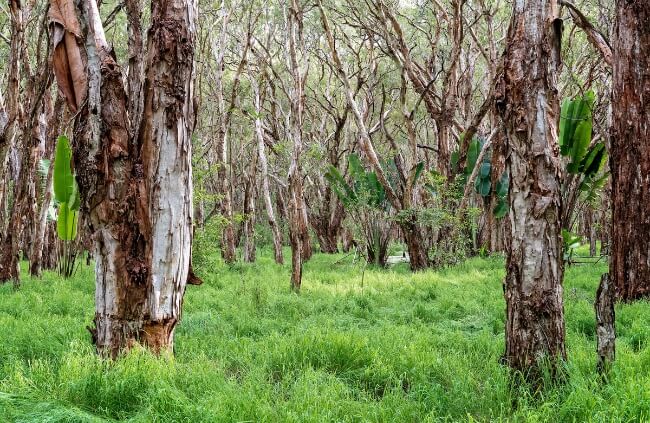
Propagating Melaleuca from Seeds
Despite having completely different flowers to most Myrtle genera, Melaleuca seed pods develop almost identically.
Collect one or two of the bowl-shaped seed pods from a plant in your own garden, or from a friend. You will not need any more as there are dozens of seeds in each capsule. Most Melaleucas will hold onto their seeds for several months once they ripen, but they can be harvested as soon as the bowl-shaped pods start to dry out.
To successfully sow and germinate these plants at home, follow these instructions:
- Fill a seed tray with well-drained but reasonably moisture-retentive compost (mix worm castings or fine coir compost through sieved compost to better regulate moisture).
- Thinly sow the small Melaleuca seed over the surface of the compost, and press them down with a dry hand or wooden block so they have firm contact with the soil.
- They need light to germinate so do not cover the seeds.
- Water lightly and then cover the tray with a lid (a sheet of glass, Perspex or even cling film will do).
- Leave somewhere where temperatures are around 18-20°C during the day and stay above 15°C at night, watering lightly to maintain moist but not wet compost.
- Germination takes around 5 weeks.
- Thin seedlings to 5 m apart, and prick out individually when they are big enough to handle.
Melaleuca Propagation from Cuttings
Taking cuttings from Melaleuca is the same as any from any Myrtle genus. It is best done in spring, before flowering, and while last year’s stems are still slightly supple (but it is possible to take cuttings of new growth in autumn – though we have had less success there).
Method:
- Fill 15 cm pots with a well-drained mix of seed compost and perlite.
- Take several 10-15 cm cuttings from the tips of last year’s growth (nothing with flower buds showing) or one long section and divide it into multiple 10-15 cm cuttings.
- Remove most of the leaves, and dip the base in rooting hormone (power and gel are both fine).
- Insert the cuttings into the pots, three or four per pot.
- Water them well, and then leave them somewhere bright but out of direct sunlight for two months, misting or watering when required.
- They should root in around 2 months and can be divided into individual pots.
- Cuttings will be ready for planting after roughly twelve months, but it's best to wait until late the following summer.
How to Care for Melaleuca
There is virtually no ongoing care required for established Melaleuca trees. They are capable of finding enough water for themselves if you plant the right species in the right place, so unless you plant a swamp-loving Melaleuca in a dry garden, there is no need to water at all, and no reason for a mulch after initially planting it.

Pruning Melaleuca
Pruning depends on how you treat your Melaleuca. One of its best properties is the fine, flaky, papery bark on mature branches. This is the case for shrubs as well as trees.
With that in mind, I would not suggest pruning Melaleuca at all unless you are growing it as a hedge or shaped shrub, or there are signs of fungal infection that need removing for the overall health of the plant.
If you do prune mature branches, be sure to cut halfway through the branch from the bottom, before cutting from the top, as Melaleuca tends to split when you saw through it, creating sites that can become infected. Cutting up first relieves pressure and reduces the chance of splitting on the final cut.
Melaleuca Pests and Diseases
Webbing caterpillars, borers and scale insects can cause problems on Melaleuca hedges in otherwise sparse gardens, but in a healthy garden, Melaleuca are rarely troubled by pests.
Their foliage is packed with essential oils that actively put off most pests, and those that continue to feed on the leaves are usually a natural food source for birds anyway.
Borers
Borers eat into the wood at the base of trees, and beneath bark higher up the plant on Melaleuca, so can be hard to spot. They are rarely a fatal problem, but they are impossible to remove without insecticide if they are causing lasting damage.
If there are piles of sawdust regularly at the base of a tree, of fungal infections spreading inexplicably along otherwise healthy branches, you can spray horticultural oil directly into their boreholes to kill them, but be mindful that one or two borers will not kill (or even damage) your tree.
Webbing caterpillars
Webbing caterpillars are potentially more problematic, especially on young plants or hedges where they can spread undetected. Heavy infestations are rare, but unmistakable when they occur.
In large enough numbers, webbing caterpillars can cover entire trees in silky secretions to guard themselves from predators. This will stop pollination, and the population of caterpillars will completely defoliate the tree.
In some conditions, it can be fatal, but during dry summers, the tree will usually recover and it is unlikely to happen again, so you can just sit back and enjoy this weird marvel of nature for now.
Like any Australian native, root infections caused by overwatering are a common problem if you plant Melaleuca in the wrong place, but other than that the only significant worry for gardeners should be Myrtle rust.
The fungus, Austropuccinia, is native to South America, and was first recorded in Australia in 2010. It now threatens extinction for many species around the country, particularly those with limited habitats.
Early symptoms appear as small purple-brown freckles and develop yellow rings that join up into larger yellow-orange pustules. Later leaves become distorted and fungus coats the warped foliage in grey-brown mould.
The fungal infection itself is not fatal to honey myrtles, but it weakens the plant so that other common infections can enter.
Growing a Melaleuca Hedge
Many species are inappropriate for hedging, but a few species really do make wonderful hedging plants. Their fine foliage creates a dense evergreen structure and generous booms every year.
To maintain a simple Melaleuca hedge, prune just once a year in summer, immediately after flowering. Trim back with hedge trimmers, as you would any formal hedge. This encourages new growth next spring which will flower in summer, ready to repeat the cycle.
The best (and most common) species for hedging are Melaleuca microphylla, Melaleuca nesophila and Melaleuca gibbosa. Their fine foliage creates neater forms, and they are slow-growing once established.
Melaleuca Frequently Asked Questions

What does Melaleuca smell like?
This plant has a more mentholated scent than typical eucalyptus oil, much like other members of the myrtle family. The scent of some Melaleuca plants is commonly described as citrussy or astringent, but Melaleuca alternifolia (most commonly used to distil the essential oil) is pungently mentholated with an overriding eucalyptus fragrance.
Are Melaleuca and Eucalyptus the same tree?
Melaleuca and Eucalyptus are different plants, but with similar properties, and they are both in the same family. Both are used to support the relief of blocked noses, and both are traditional herbal tea ingredients.
Is Melaleuca poisonous to humans?
All forms of Melaleuca oil are toxic if consumed in high quantities, and over applying it to the skin can cause irritation. Thankfully, the distilled tea tree oil we use medicinally is of a much higher concentration, and consuming tea brewed from the leaves is perfectly safe for humans.
Why is Melaleuca called a tea tree?
Tea tree is the general name for the entire myrtle plant family because when James Cook documented his explorations of Australia, it was used to create herbal tea. Prior to that, tea trees were used by aboriginals to soothe cuts and scrapes.
What is Melaleuca good for?
Melaleuca essential oil is used as a topical treatment for cuts and scratches thanks to antibacterial and cooling properties. It is also believed to help treat acne and bacterial skin infections. As a tea, brewed from the leaves, Melaleuca is thought to relieve stress.
What is the lifespan of Melaleuca trees?
Melaleuca trees have a lifespan of over 100 years. They are tough plants that develop to maturity in most conditions and require very little care or attention on our part as gardeners.
Is Melaleuca safe for cats and dogs?
Melaleuca oil is toxic to dogs and cats, despite being used in several pet care products. If ingested it can lead to severe toxicity in both species, and your animal should be taken to the vet immediately if they show any change in behaviour (sooner if you are sure they have consumed a significant amount).
Who should not drink Melaleuca leaf tea?
If you have reported problems with liver function or take medication to manage your liver, avoid drinking Melaleuca tea, or using Melaleuca oil.
Wrapping Up Our Guide to Growing and Caring for Melaleuca Plants
Melaleuca must be one of the most statuesque trees in our native arsenal. It is packed full of character, and the wispy silhouette of mature trees is mind-blowing.
If you have ever had the slight inkling of growing one, or you are thinking of adding a myrtle to your garden, but do not know what type to choose, narrow it down to Melaleuca. Because they are suited to most soil types and easy to grow, Melaleuca should be right at the top of your list when planning native trees for the garden.
Published on December 26, 2023 by Lorri Hopkins
Last Updated on December 5, 2025




